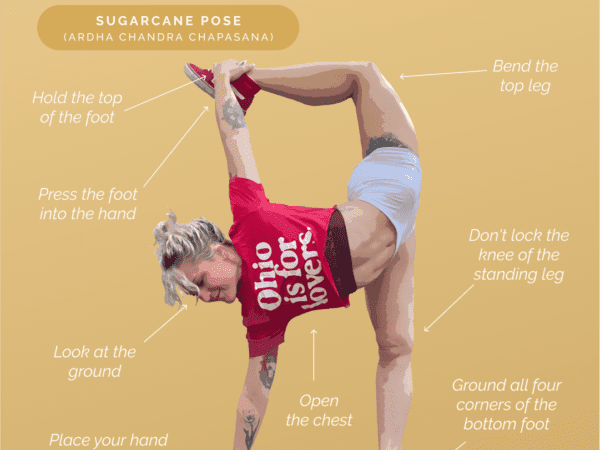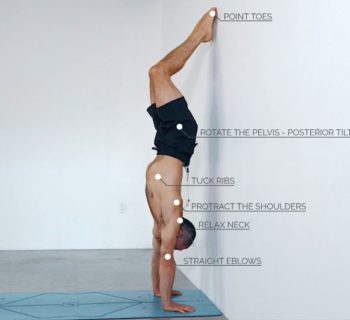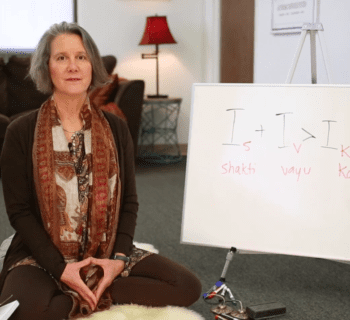Modified dancer pose, also known as natarajasana, is a beautiful and challenging yoga pose that combines strength, balance, and flexibility. If the full expression of the posture is too difficult for you, you don’t have to give up on the pose. There are variations you can try. In this tutorial, we’ll look at one of the variations of dancer pose. By practicing this pose regularly, you can improve your posture, increase your focus, and enhance your overall body awareness.
Benefits of modified dancer pose
Practicing modified dancer pose offers a range of benefits. It helps to improve balance, strengthen the legs and core, open the chest and shoulders, and increase flexibility in the hips and thighs. Additionally, this pose can enhance concentration, promote a sense of calm, and boost self-confidence.
What muscles are worked in modified dancer pose?
Modified dancer pose, also known as natarajasana, is a beautiful and graceful yoga posture that offers a multitude of benefits for the body and mind. This variation of the pose provides an accessible and modified version of the traditional dancer pose, making it suitable for yogis of all levels, including beginners or those with limited flexibility or balance.
In this modified version, several key muscles are engaged and worked to promote strength, flexibility, and balance. Let’s explore the muscles that are specifically targeted in modified dancer pose:
Quadriceps: The quadriceps, a group of large muscles located in the front of the thigh, play a significant role in this pose. As you extend your leg backward and grab hold of your foot or ankle, the quadriceps work to maintain balance and stability.
Hamstrings: The hamstrings, located at the back of the thigh, are also activated during modified dancer pose. They assist in extending the leg backward and lifting it towards the direction of the hand.
Gluteal Muscles: The gluteal muscles, including the gluteus maximus, medius, and minimus, are engaged in order to stabilize the hips and maintain proper alignment. These muscles play an essential role in maintaining balance throughout the pose.
Core Muscles: The core muscles, including the transverse abdominis, rectus abdominis, and obliques, work to support the spine and stabilize the torso. This engagement helps to maintain an upright position and prevents excessive forward bending.
Shoulder Muscles: The deltoids, trapezius, and rotator cuff muscles are also involved in modified Dancer Pose. They assist in maintaining stability, opening the chest, and extending the arm towards the sky or backward.
Back Muscles: The muscles of the upper and lower back, including the erector spinae and rhomboids, are strengthened and elongated as you arch your back and extend your arm backward. This can improve posture and alleviate tension in the back.
Can modified dancer pose help with flexibility and mobility?
Absolutely! Modified dancer pose is a wonderful yoga pose that can greatly improve your flexibility and mobility. This variation of dancer pose is specifically designed for individuals who may have limitations or feel discomfort in the traditional version of the pose.
The modified dancer pose primarily targets the hips, shoulders, and quadriceps, but it also works on improving balance and core strength. By practicing this pose regularly, you can gradually increase your range of motion and enhance your overall flexibility.
If you’re looking to enhance your flexibility and mobility, incorporating modified dancer pose into your yoga practice can be incredibly beneficial. It’s a versatile pose that can be modified to suit your needs, making it accessible to yogis of all levels. So go ahead and give it a try!
Contraindications of modified dancer pose
While Modified Dancer Pose is generally safe for most people, there are a few contraindications to keep in mind. Individuals with ankle, knee, or hip injuries should approach this pose with caution or avoid it altogether. Pregnant women, those with high blood pressure, or individuals with vertigo or dizziness should also avoid practicing this pose. It is always advisable to consult with a qualified yoga teacher or healthcare professional before attempting any new yoga pose, especially if you have any pre-existing conditions or injuries.
How to do modified dancer pose (step-by-step)
To achieve the modified dancer pose, start by standing tall with your feet hip-width apart. Shift your weight onto your left foot and bend your right knee, bringing your right foot towards your glutes. Reach your right hand back and try to catch hold of your right foot or ankle. If reaching your foot is challenging, you can use a strap or towel to help you make the connection.
Keep your left hand on your left hip to maintain balance and stability. Begin to extend your right foot upwards, gently kicking into your hand while simultaneously leaning forward slightly. Focus on keeping your chest lifted and engaging your core muscles to avoid straining your lower back. You don’t have to think about getting your foot as high as possible or arching through your back in this version of the pose. Instead, focus on maintaining your balance.
If you can extend your left hand out in front of you. Gaze down the arm past the tips of the fingers.
This is one of the modifications of dancer pose. If you have difficulty balancing on one foot, you can use rest one of your arms on the back of a chair to help with balance.
Hold this position for several breaths, allowing your body to adjust and deepen the stretch. Remember to breathe deeply and comfortably throughout the pose, as this will help calm your mind and relax any tension in your body.
Practicing modified dancer pose regularly can offer numerous benefits. It increases flexibility in your hips and quadriceps, improves balance and coordination, enhances spinal mobility, and opens up your chest and shoulders. Additionally, this pose helps to stretch and strengthen the muscles in your legs, improving their tone and stability.
As with any yoga pose, it’s important to listen to your body and modify as needed. If you experience any pain or discomfort, it’s essential to back off and find a variation of the pose that works for you. Remember, yoga is a personal journey, and every body is unique.
Remember to always listen to your body and modify the pose as needed to suit your individual needs and abilities. As with any yoga practice, it is important to approach modified dancer pose mindfully and with proper alignment to fully experience its many benefits. Enjoy the journey of exploration and self-discovery that this beautiful pose offers.
Are you looking for more guidance on your yoga journey? Sign up for Omstars to get access to thousands of yoga classes in the comfort of your own home. Start your subscription today.










